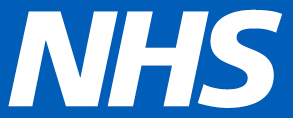October was National Cholesterol Month, and our team have been busy hosting a series of lipid optimisation education sessions; launching the new Child Parent Screening pilot for Familial Hypercholesterolaemia; increasing adoption and spread of lipid optimisation pathways and preparing to roll out Inclisiran to complement current treatments. Read more about our Familial Hypercholesterolaemia (FH) and Lipid Optimisation programme.
In this blog, Clare Evans, Deputy Director of Service and System Transformation at the West of England AHSN, tells us more about Inclisiran and how local systems can get involved….
If you listen to the radio or read a newspaper it won’t be long before you hear the word ‘Cholesterol’. In my experience as a former nurse cholesterol can be seen as something only some of us have but we all have a level of cholesterol in our bodies. The question is whether each of our levels of cholesterol is ‘good’ or whether it’s high and could be doing us harm and lead to cardiovascular disease (CVD).
CVD is a health equity issue
CVD has been identified in the NHS Long Term Plan as the biggest single area where the NHS can save lives in the next ten years – 150,000 to be exact. Heart disease causes one in four deaths in England, and two in five people in England are thought to have high cholesterol. These stats make sobering reading. We also know that those living in areas of multiple deprivation are more likely to be affected by CVD. If we’re serious about tackling health inequity, CVD and cholesterol is one of the most significant areas to focus on.
Through the AHSN Network’s Lipid Optimisation and Familial Hypercholesterolemia (FH) programme we have been making significant progress in the West of England region. The programme includes working across our region’s three systems to increase the diagnosis and treatment of FH patients, including young people and children. Some of us may be pre-disposed to CVD because of FH – an inherited condition passed down in families. FH can lead to extremely high cholesterol levels. It affects 1 in 250 people in the UK, yet over 90% of cases are still undiagnosed. Our new pilot, also taking place across six other AHSN regions in England, will use a heel-prick test to identify FH in children and subsequently their families.
So where does Inclisiran come in?
Before now if a patient was on the maximum dosage of statins, had been prescribed Rapid Uptake Products such as ezetimibe or PCSK9i and their cholesterol levels were not decreasing, options were limited. But now Inclisiran can support these patients.
Inclisiran injections use a biological process where molecules can shut down protein translation to help the liver remove harmful low density lipoprotein cholesterol (which are often simply referred to as ‘bad cholesterol’) from the blood. Inclisiran can be used with statins or on its own.
In line with NICE guidance, Inclisiran won’t be available to all patients with high cholesterol and can only be prescribed if someone has had a CVD event such as a heart attack or stroke. Inclisiran provides a new option when other treatments are not working – it can reduce cholesterol levels by 50%.
Read more about Inclisiran and the partnership between the NHS and industry to tackle cardiovascular disease.
What’s next?
The Accelerated Access Collaborative are responsible for the implementation of the Inclisiran partnership. Now that Inclisiran is available to NHS patients in England, AHSNs, as the delivery partner, are working to ensure that the new treatment fits seamlessly within the lipids care pathway.
Locally we’ve therefore started conversations to discuss Inclisiran and how it complements the current lipid-optimisation pathway for a specific subset of patients. It’s our job at the AHSN to hear about any local barriers or challenges to Inclisiran uptake and work collaboratively with systems to try and remove these.
Inclisiran remains one part of the lipid optimisation pathway, so we’ll be complementing our ongoing programme, so all of those with CVD see benefits rather than ‘just’ those who will be able to receive Inclisiran.
We’re also working to ensure our systems are fully briefed on the Accelerated Access Collaborative’s revised lipid pathway (which is currently being developed).
How do I get involved?
If your work is related to CVD and lipids optimisation in the West of England region whether that be as an Integrated Care System lead, in a Trust, Primary Care Network, General Practice, pharmacy or as a local lipid specialist, please get in touch with me, clare.evans14@nhs.net or my colleague Rachel Gibbons, rachel.gibbons10@nhs.net so we can discuss how Inclisiran can be adopted by your organisation.
Read more about our Familial Hypercholesterolaemia (FH) and Lipid Optimisation programme.
In addition, there is a comprehensive cholesterol awareness and education campaign targeted at health care professionals involved in lipids management which can be accessed on the Heart UK website.






